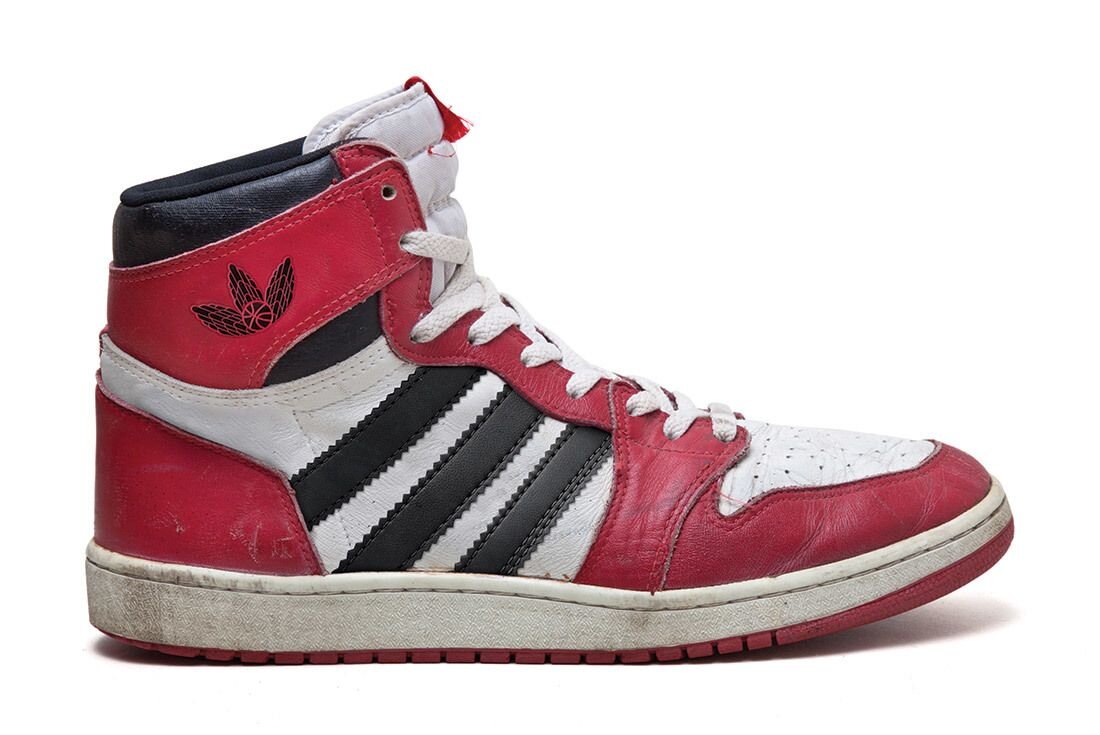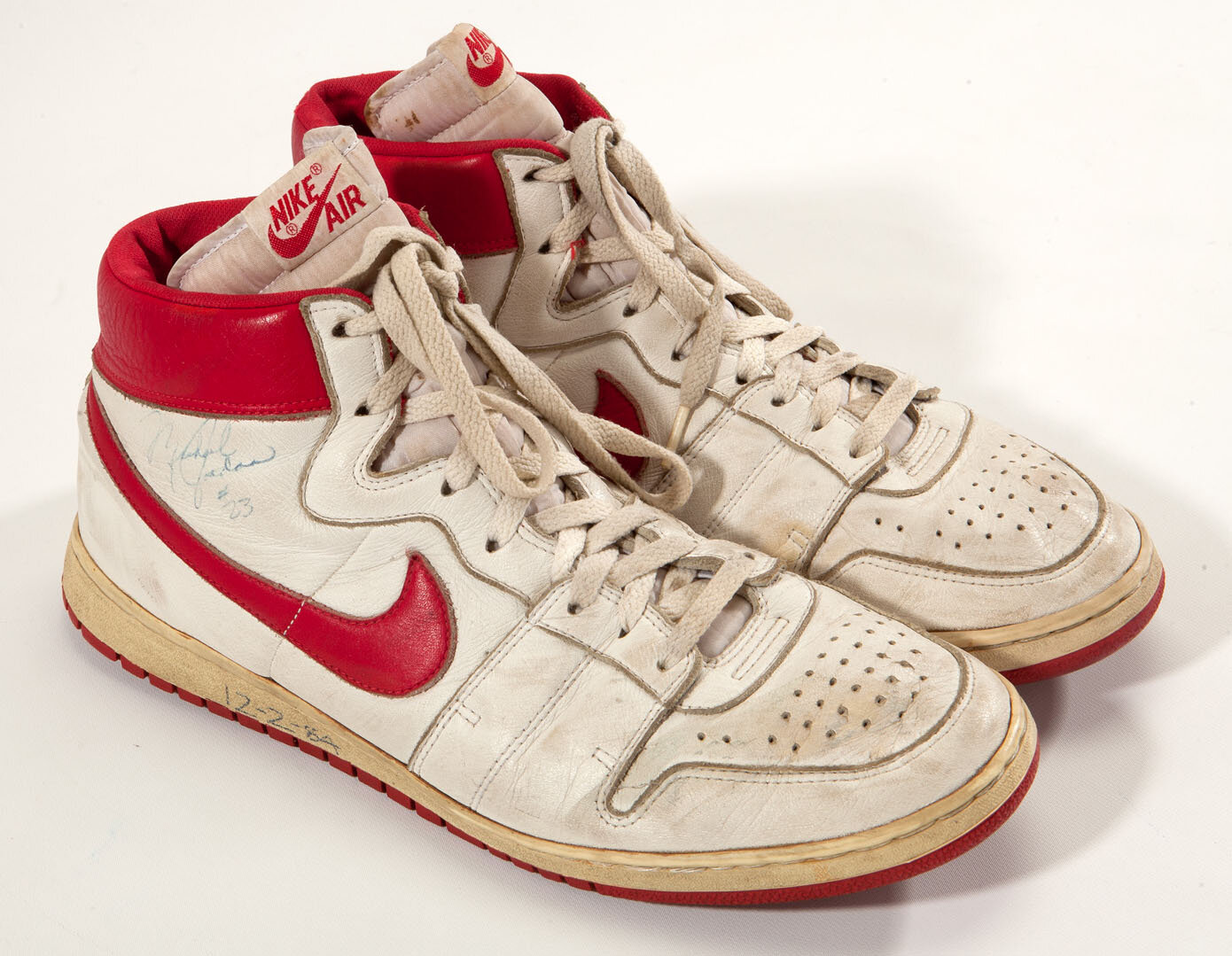The Biggest Shoe Brand Deal That Never Was.
Let’s set the scene. It was about 1130PM. The house was finally quiet and I was catching up on “The Last Dance” on Netflix. There’s no way you don’t know about it - the sports documentary following the amazing story of the 1989 Chicago Bulls, and the rise of the messiah, Michael Jordan.
I was about a week behind the rest of the world and on a binge watching session. I was at episode 5 and Jordan is in college, talking about how much loved Adidas. I had to rewind. Yeah, he said that. He LOVED Adidas. The biggest poster child in the history of Nike just said he loved Adidas. MJ loved the 3 stripes so much he even tried to wear them during his North Carolina days, despite their exclusive deal with basketball OG’s, Converse.
(Like the time Jamie Carragher - an Everton fan growing up - wore his Everton kit to his first Liverpool trial.)
Anyway, back to it. Converse were THE brand in the basketball game at the time. They were the official shoe of the NBA and had some major player deals already. Names like Julius Irving. Larry Bird. Magic Johnson. These are big-time names. The shoe game was all about comfort back then, not style, and Converse owned that space. So much so that Jordan even played in his first Olympics wearing Converse shoes. As we know now though this was very short lived.
It’s 1984. Nike are in trouble.
Not a sentence you would even think for one second hearing today, but back then they were definitely a brand in transition. Big in the running game, Nike’s numbers were just not cutting it. They needed to do something different. Nike had been THE name in running right back to the days of Bill Bowerman and Blue Ribbon Sports. Running was their heritage. The thing was, their popularity in that market in the 80’s was on the drop, so they had to shake things up. The plan was to re-invent themselves as a brand for athletic stars, but to realise this dream they needed someone. Someone who was gonna be big.
We Want Michael.
Nike had picked their athlete. Jordan was still a rookie, but their crystal ball was on the money. Somehow they just knew. So Nike made their approach and as the rumours had it, they offered MJ $500,000 in cash, per year, for a minimum of 5 years, hoping it would be the deal to convince him. What they hadn’t bargained on was Jordan’s love of their big rival - Adidas. What they also hadn’t bargained on was that basketball giants Converse wanted him too. And they had the advantage - or at least they thought they did - with big player partnerships already done. This was a non-starter for Jordan though. Converse were too big in the game with some big stars, and he just didn’t know where he would fit. He wanted more of the limelight.
So this was going to be a big moment in MJ’s career and he probably didn’t know it, but this decision would shape his future, basketball’s future and even the fashion-future of a generation. What was he going to do?
Jordan loved the Three Stripes, and once the Nike offer was on the table he had an idea - he was gonna take this to Adidas and give them the chance to make a deal happen. He felt that they would give him the best opportunity to make money and to run the Jordan brand the way he wanted to. So he went for it.
Now Adidas had a couple of things going against them at the time. They were in a leadership shift which meant the company was a little more dysfunctional than they would like. They also seemingly had no ambition to sign basketball players back then. It just wasn’t where they were. So they listened, and although they were very open to the idea of a partnership with the young sensation, they just couldn’t get anywhere near what Nike had on the table. They “just couldn’t make a Jordan shoe work”.
So with nothing more from Adidas and a deal with Converse not really right, Jordan went back to the Oregon shoe company, signed on the dotted line and a new brand was born.
In 1984 the first shoes Jordan wore on-court in the NBA were the lesser known Nike “Air Ships”. Pretty basic in design, what you probably don’t know is that Jordan wore these for almost his entire rookie season. Something else you might not know is that the Air Ships were eventually banned by the NBA. Nike produced red and black versions that he wore on 18 October 1984. The NBA wanted you to wear shoes that matched your uniforms AND your teammates. This broke the rules. Something that Nike played on with their infamous “banned” campaign (we’ll get back to this one.)
So Michael had to wait almost a year for his first signature shoe. Phil Knight (Mr Nike) was under no illusion how big Jordan was to Nike, and knew that his first signature shoe had to be good. Really good. Peter Moore was the Creative Director at the time and this job was his. His brief was short - Jordan wanted the shoe to be lower cut that the other high-tops in the NBA and it had to be “exciting”.
The Air Jordan I - Supple leather, lower cut and a large Nike Swoosh on the side panels. The primo detail though was the Wings logo. Moore actually drew this on the back of a napkin after being inspired by the combination of Jordan and Nike. A basketball with wings paying homage to Michael’s athletic ability and Nike’s Air Technology. Moore thought it was a slam dunk. He was wrong.
JORDAN WASN’T IMPRESSED.
At First.
Jordan didn't like them, saying he would look “ridiculous on the court”. This was not the start Nike dreamed of. Over time though MJ changed his mind. And it’s just as well he did. He eventually took to the court in them and it didn’t take long for the Air Jordan I to get noticed. Nike dropped a number of different colour options and before long they had the shoe the stood out above almost every other in the game. Nike ran with it and went on to create a number of Bulls-themed versions. The “Bred,” “Chicago,” and “Black Toe” would make up the pairs Jordan wore, but Nike didn’t stop there and released a variety of other non-Chicago styles. They went on to become the symbol of the sneakerheads and arguably the most iconic shoe of all-time.
The ban is where Nike showed early on it’s marketing genius. When they released the Bulls-style black and red Air Ships the NBA were not happy. NBA Commissioner at the time, Russ Granik reached out to let Nike and the Jordan camp know that they were not playing to the 51% rule - the NBA rule that states that 51% of a player’s shoes must match the uniform of his team. These didn’t. And the NBA would fine Jordan $5000 for every game that he wore them. But that didn’t stop Jordan. Or Nike. In fact they spotted the perfect brand opportunity. Something they knew would hit right at home with the sport, their star and most importantly, their target market.
Nike paid the fine themselves and released this:
“
On October 15, nike created a revolutionary new basketball shoe. On October 18, the NBA threw them out of the game.
Fortunately, the NBA can’t stop you from wearing them.
Air Jordans.
From Nike.
”
They killed it. Nike predicted it would sell around 100,000 pairs. A decent estimate. By May 1985 they had sold almost 4 million with sales of just over $55 million. The Air Jordan I had a waiting list long before its official release date of July 1st, eventually making it one of the most sought after products in Nike’s history.
So it ended up being the biggest shoe deal that never was. Adidas could have had the most marketable player in the history of sports, but passed because they were not given foresight of what was to come. Nobody was. Nobody but Nike. Maybe Adidas couldn’t make it work. Maybe they didn’t want to sign basketball players. Or maybe they just didn’t believe in him or the project. But Nike did.
In fact from May 2018 to May 2019 the Jordan brand alone had made over $3 billion. That’s one costly mistake for Adidas.




